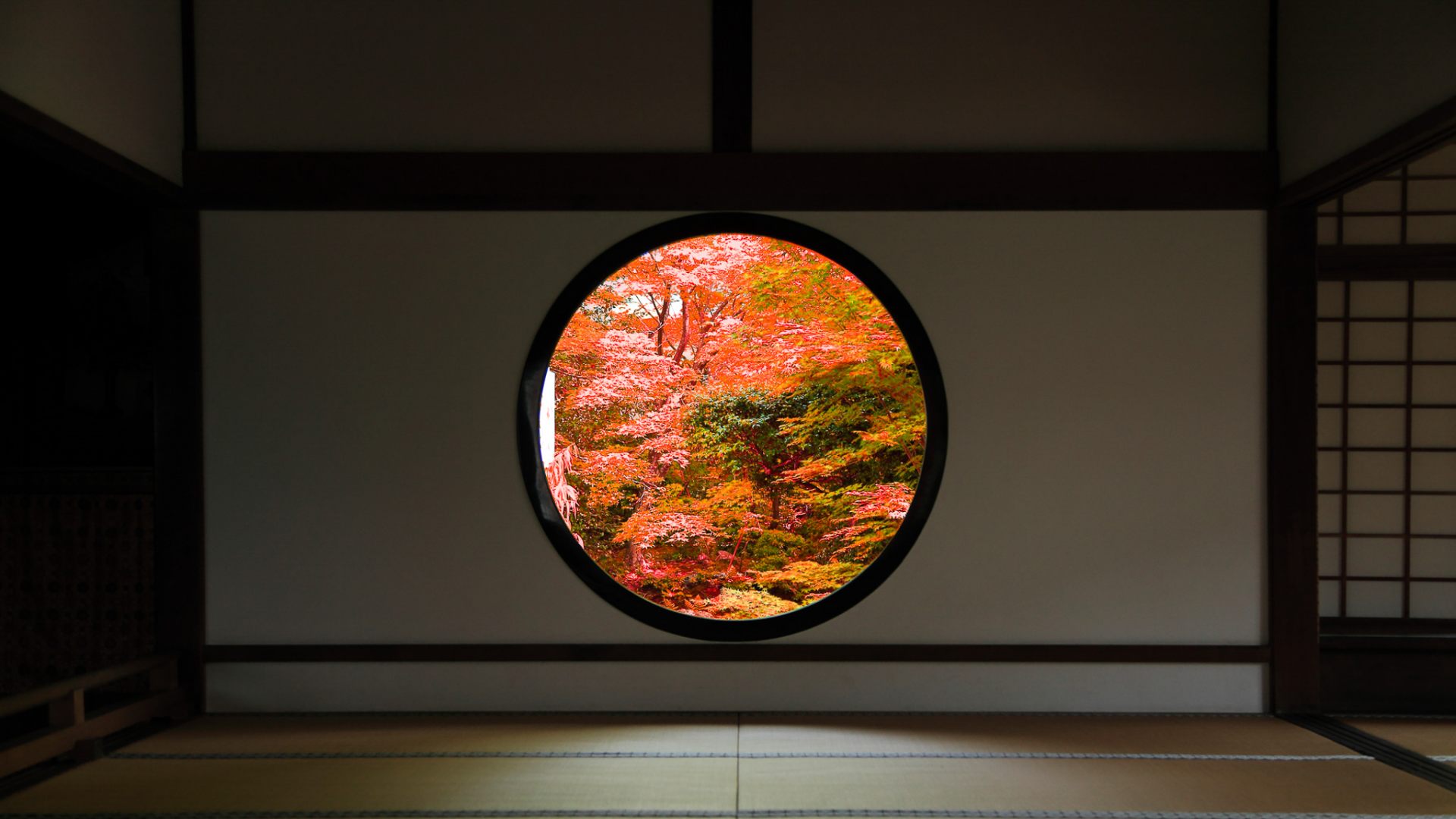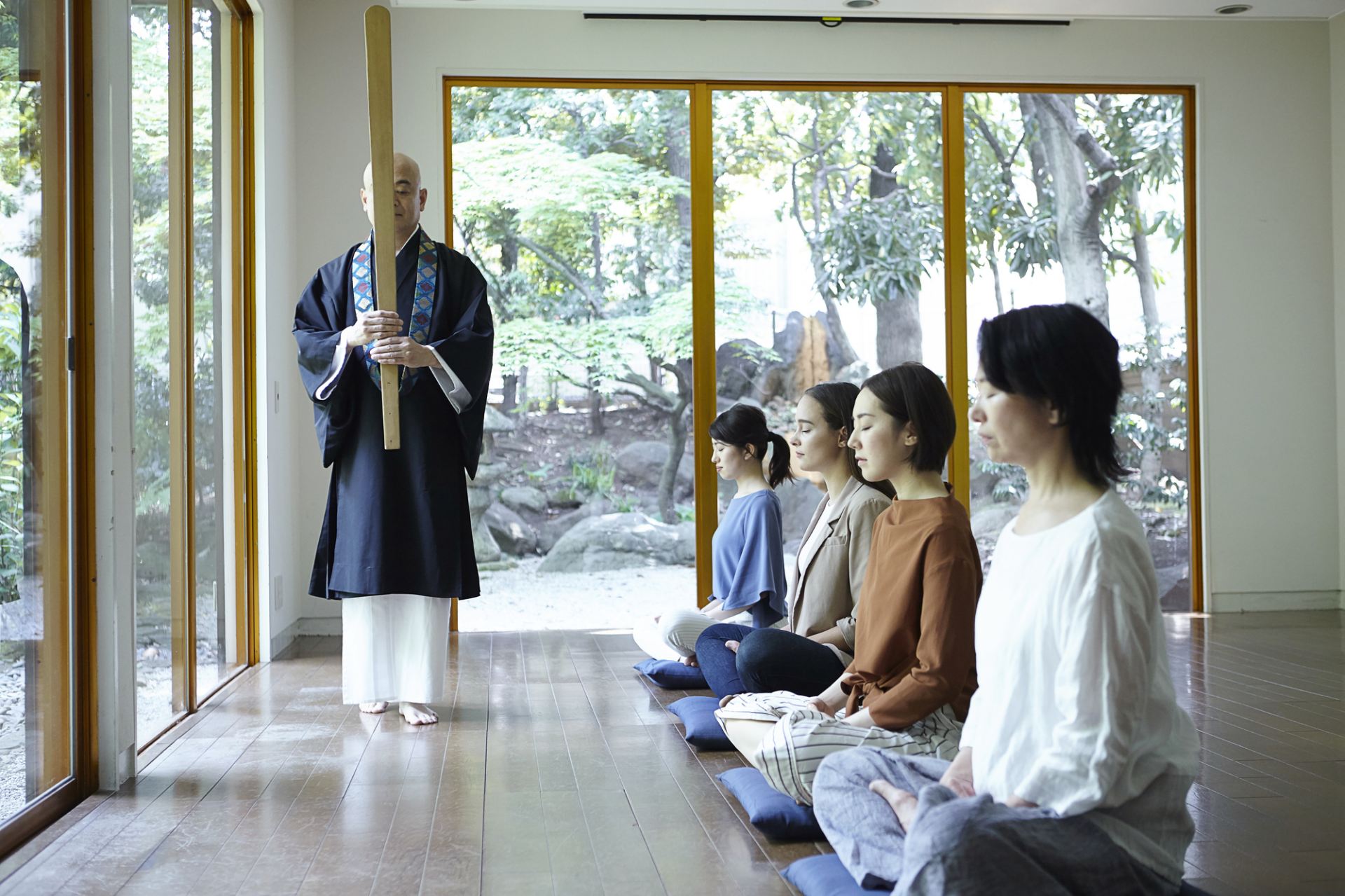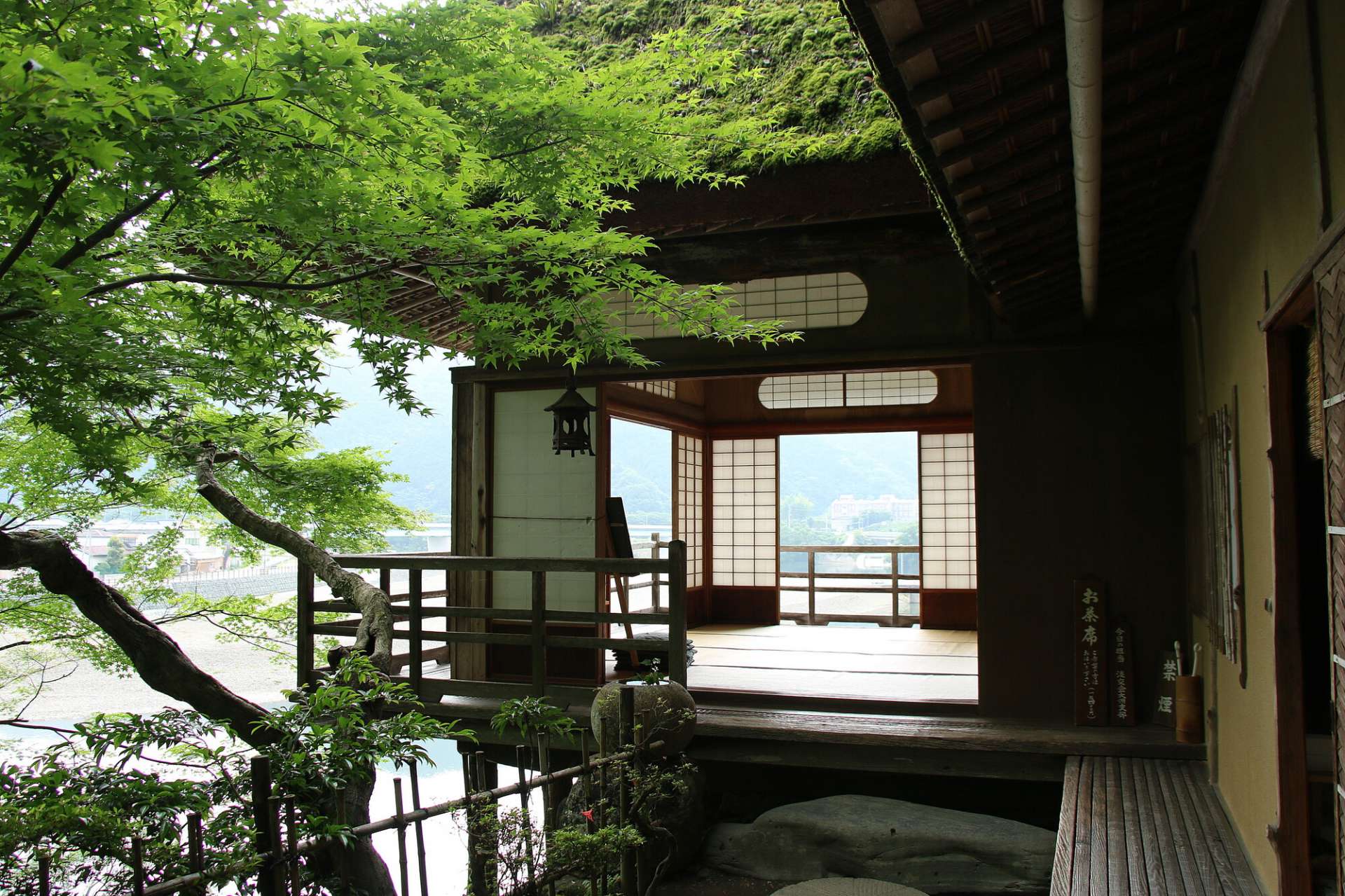
Wabi-sabi
A unique aesthetic sense of the Japanese.
Wabi-sabi is a unique Japanese aesthetic and philosophy that finds value and charm in imperfection.
Until today, it has been deeply rooted in Japanese culture and values, exerting significant influence.
This article aims to explain the concept and meaning of wabi-sabi as clearly as possible, reflecting on its history and the background of its spread in Japan.
Additionally, it will introduce spots where one can experience wabi-sabi and recommend travel destinations.
By reading till the end, you should be able to grasp the somewhat abstract and challenging concept of wabi-sabi to some extent.
Important points:
-
Wabi-sabi is a concept that succinctly expresses the unique aesthetic and sensibility inherent in the Japanese people.
-
It has permeated and spread among the Japanese through Zen, Buddhism, tea ceremony, and haiku.
-
There are traditional crafts such as kintsugi, which express wabi-sabi.
-
Tourist spots such as shrines, temples, Japanese gardens, and old folk houses are places where one can easily experience wabi-sabi.
What is wabi-sabi?
Wabi-sabi is a concept that succinctly captures the unique aesthetic and sensibility inherent in the Japanese people. Specifically, it is a principle that entails not viewing imperfect things (such as decay or imperfection) negatively, but rather finding beauty in the various changes brought about by nature and the passage of time, embracing the silence that arises and deeply savoring it as an aesthetic appreciation.
It might be best described as a contrast to the Western aesthetic, which often places emphasis on lavish decoration and objects, while Japanese culture values simplicity and empty space.
Additionally, it’s worth noting that wabi-sabi originally consists of two distinct words, wabi and sabi, but in contemporary usage, they are often discussed together as a single concept.
The term wabi-sabi is recognized worldwide, as evidenced by its existence in English, and it is gradually becoming emblematic of Japanese culture.
However, understanding the concept correctly is challenging for both foreigners and even Japanese speakers, as wabi-sabi is a word that’s difficult to articulate and grasp linguistically, relying more on a sensory understanding.
Here are some example sentences using wabi-sabi:
- I so naturally feel wabi-sabi in the unique atmosphere of Japanese temples.
- The spirit of wabi-sabi is conveyed through traditional works of art.
- I felt wabi-sabi in the falling petals of cherry blossoms.
Note: Since there isn’t a precise definition, individuals are free to express wabi-sabi whenever they feel it, regardless of the subject.

What is wabi?
Wabi is the noun form of the verb “wabu,” originally referring to negative emotions or psychological states such as dejection, confusion, pessimism, or hardship.
However, from the medieval period onwards, it underwent a transformation in meaning. It came to denote a positive sense of finding beauty and enjoyment in imperfections and flaws – just as people experiencing hardship in their lives during that time shifted their perspective from lamenting their circumstances to accepting reality and living positively.
This evolution led to the current closest meaning of wabi as “simple living” or “serene and tranquil.” Furthermore, the understanding of wabi accelerated through its association with the Japanese tea ceremony (“sado”).
As a result, the spirit of wabi is strongly reflected in the tea ceremony, particularly exemplified by wabi-cha.

What is sabi?
Sabi is the noun form of the verb “sabu,” which refers to the condition of deterioration over time, such as aging, rusting, or decaying.
Similar to wabi, sabi wasn't initially considered a positive concept. However, during the Heian period (794-1185), the poet Fujiwara Toshinari actively found beauty in sabi.
Furthermore, during the early Edo period (1603-1868), it is said that the poet Matsuo Basho’s artistic poems featuring sabi changed perceptions. This connection with haiku became significant, and nowadays, sabi is often interpreted as expressing depth and a sentimental mood within tranquility.
To elaborate, it’s a concept of beauty that perceives the taste emerging from deterioration and age as the inner essence, which then manifests outwardly. Thus, the surface beauty of sabi is seen as revealing the spiritual richness of wabi.

History of wabi-sabi
Let’s explore where wabi-sabi originated and how it developed and permeated Japanese culture over time. Knowing the history behind the roots of wabi-sabi should deepen your understanding further.
Wabi-sabi is rooted in Taoism
Today, wabi-sabi is considered a unique aspect of Japanese culture, which may seem like a peculiar sense when viewed from the outside world. However, the concept itself originated from Taoism during the Song Dynasty era (960-1279) in China.
In Taoism, wabi-sabi referred to a way or idea of appreciating beauty through asceticism and modesty. However, as it was transmitted to Japan, it underwent changes to better suit the characteristics of the Japanese, gradually establishing itself as a distinctive aspect of Japanese culture. Subsequently, as it became incorporated into Zen Buddhism and other Buddhist practices, wabi-sabi evolved further, eventually becoming deeply ingrained in the imagery associated with Japan and its people.

Spread of wabi-sabi
The concept of wabi-sabi, which was introduced from China during the Nara period (710-794), began to take root in Japan around the mid-16th century, circa 1550. The spread of wabi-sabi was closely tied to the practice of the tea ceremony, or “sado,” which was intimately connected with the political landscape of the time.
During an era when lavish and vibrant Chinese ceramics were highly favored, tea artists such as Murata Jukō and Sen no Rikyu emphasized the importance of delicacy and simplicity to their disciples. This resonated with the values of the common people, gradually drawing attention to the concept of wabi and causing its popularity to grow.
The humble tea rooms and tea bowls that continue to be passed down to this day originated from this period. Sen no Rikyu became a symbolic figure of wabi-sabi and achieved significant success, serving under Oda Nobunaga, the preeminent figure of the time.
Furthermore, Toyotomi Hideyoshi had Sen no Rikyu build a tea room called “Tai-an,” utilizing the tea ceremony for political purposes to consolidate his power. However, fearing Sen no Rikyu’s influence, which extended to political matters, Toyotomi Hideyoshi ordered him to commit seppuku (ritual suicide).
This event led to a separation between the tea ceremony and politics, and there was concern that the concept of wabi-sabi might fade away. However, ironically, Sen no Rikyu’s death resulted in an ultimate demonstration of imperfection.
Once Tokugawa Ieyasu unified the country, wabi-sabi and the tea ceremony experienced a rapid spread, becoming deeply ingrained in the lives of the Japanese people.

Feel wabi-sabi in kintsugi the traditional craft
Kintsugi is a traditional Japanese craft technique used to repair damaged parts of pottery or ceramics, such as cracks, chips, or fractures, using lacquer. Despite its name, kintsugi (literally “golden repair ”), the technique primarily employs lacquer, although there is also a variation called gintsugi (silver repair) where silver is used instead of gold.
It is said that the current technique of kintsugi originated during the Azuchi-Momoyama period (1573-1603) to the Edo period, along with the popularization of the chanoyu (tea ceremony) culture. Chanoyu is an evolved form of wabi-cha, a school or style of tea ceremony which was perfected by Sen no Rikyu, which aimed to eliminate excess to the utmost limit.
As mentioned earlier, the chanoyu culture, which was utilized for political purposes, became a hallmark of samurai refinement. Mastery of etiquette and tea utensils became a symbol of power. Additionally, one of the reasons for the spread of chanoyu culture can be attributed to the fact that warlords sought solace in the tea ceremony during periods of constant warfare.
Kintsugi is performed with the philosophy of embracing the scar as part of the history, leading to the beginning of a new narrative. Therefore, rather than restoring the object to its original state, the characteristic feature of kintsugi is to repair it in a way that enhances its depth by highlighting the scars, turning flaws and damages into strengths and adding value to the object. There are many parallels with the concept of wabi-sabi, making it a technique that embodies aesthetic sensibility.

Places to feel wabi-sabi
Now let us introduce three types of places in Japan where you can truly experience wabi-sabi. Each of these types highlights the beauty in the imperfection brought about by the passage of time and delicate changes, sparking the imagination of the viewer. They are recommended as the first places to experience the concept of wabi-sabi, which can be challenging to put into words.
Shrines and temples
Shrines and temples that retain their appearance from the time of their construction are typical places where you can feel wabi-sabi. Almost all of these structures exhibit signs of deterioration, damage, or fading colors, which may leave those seeking perfection feeling unsatisfied. However, when viewed through the spirit of wabi-sabi, each scar becomes evidence of the building’s history, and reflecting on the passage of time can evoke a sense of charm.
The essence and interpretation of the atmosphere perceived from the current appearance vary from person to person, and there is no correct answer. This diversity of perception is also part of the charm of wabi-sabi. It’s best to accept things as they are without overthinking.

Japanese gardens
Japanese traditional gardens, known as nihon-teien, are also places where you can feel wabi-sabi. Among them, the landscape of kare-sansui (a style of Japanese garden) that expresses natural scenery solely through the combination of rocks and sand is a typical example of wabi-sabi.
By not using water, this style creates an imperfection characteristic of wabi-sabi, and by arranging withered leaves and moss-covered rocks, it shows the passage of time, portraying decay and tranquility.
Without excess, these spaces where beauty and the spirit of wabi-sabi thrive serve as a gateway to a contemplative world for the observer.
It’s good to sit quietly while gazing at these gardens, engaging in self-reflection and finding your own interpretation of the sight. Among Japanese gardens, the Ryoanji Temple, renowned for its iconic kare-sansui garden, and the Saihoji Temple, where you can enjoy the beauty of moss, are particularly famous for evoking the sense of wabi-sabi.

Kominka
You can also experience wabi-sabi in traditional Japanese houses, known as kominka. Typically referring to buildings constructed using traditional Japanese architecture before the Taisho period (1912-1926), these structures retain a sense of harmony with nature.
In these houses, ancient materials like hinoki (Japanese cypress), sugi (Japanese cedar), and keyaki (Japanese zelkova) are used appropriately, creating an exquisite space filled with the aesthetics of the Japanese people. The scent of wood, the hues of the grain, the fragrance of tatami mats, and the radiant light filtering through Japanese paper all contribute to the charm of these spaces.
Furthermore, the patina and color changes developed over 200 to 300 years of use add depth and character to these environments. With various types of kominka categorized by architectural style and purpose, each possesses its own unique charm of wabi-sabi.
If you visit accommodations or tourist spots that utilize kominka, you can tour the interiors and even experience living in them firsthand. Stepping inside reveals landscapes hidden from view outside, making it a highly recommended experience. Particularly famous are areas like Shirakawa-go and Hida no Sato in Gifu Prefecture, Sawara in Katori City, Chiba Prefecture, and Tamba Sasayama City in Hyogo Prefecture, where rows of kominka line the streets.
In addition, there are facilities throughout Japan that use kominka and towns where kominka are plentiful.

Visit Kyoto and Nara for many spots to feel wabi-sabi
When it comes to destinations where you can experience wabi-sabi, Kyoto and Nara stand out. Since these two areas are adjacent, travelers can journey through both places to immerse themselves in the essence of wabi-sabi. Let us explain why each of them is recommended.
You can feel wabi-sabi even in the streets of Kyoto
Known as one of Japan’s premier tourist destinations, the ancient city of Kyoto boasts numerous historic structures designated as UNESCO World Heritage Sites or Special Places of Scenic Beauty. In addition to the previously mentioned Ryoanji Temple, famous shrines, temples, and Japanese gardens such as the Kinkakuji Temple, the Kiyomizudera Temple, and the Fushimi Inari Shrine are in close proximity, allowing visitors to experience the essence of Japan from every corner.
Furthermore, the entire city of Kyoto, which inherits both tangible and intangible traditions such as the performing arts of “maiko” and the wooden architecture of “kyomachiya,” exudes a serene and solemn atmosphere of wabi-sabi. Taking a leisurely stroll through the emotionally rich streets of Kyoto, one can expect to feel wabi-sabi at every turn, providing a unique experience different from their daily life.

Feel wabi-sabi in the harmonious blend of nature and historic buildings
Nara boasts a charm that seamlessly blends its rich historical and cultural heritage with abundant natural beauty, featuring iconic landmarks like the Great Buddha of Todaiji Temple. In 1998, the “Historic Monuments of Ancient Nara,” comprising eight assets including the Kohfukuji Temple and the Kasuga Taisha Shrine, were inscribed as a UNESCO World Heritage Site. The harmonious blend of historically significant structures and quaint landscapes in Nara’s streetscape exudes deep beauty and allure.
The sight of flowering trees and plants changing with the seasons, blooming vibrantly and eventually withering in a process of regeneration, resonates deeply with the aesthetic sensibilities of the Japanese people. Additionally, the Nara Park is home to wild deer, designated as Natural Treasures, coexisting harmoniously with humans for over 1,300 years. With many unique landscapes found only in Nara, it’s the perfect place to experience wabi-sabi.

Photos
-
![Wabi-sabi. A unique aesthetic sense of the Japanese.]()
Wabi-sabi. A unique aesthetic sense of the Japanese.
-
![The main hall's "Window of Enlightenment" and "Window of Delusion."]()
The main hall's "Window of Enlightenment" and "Window of Delusion."
-
![The spirit of wabi is deeply reflected in the Japanese tea ceremony known as sado.]()
The spirit of wabi is deeply reflected in the Japanese tea ceremony known as sado.
-
![The statue of poet Matsuo Basho, who changed perceptions of sabi.]()
The statue of poet Matsuo Basho, who changed perceptions of sabi.
-
![Wabi-sabi permeated through Zen Buddhism and other Buddhist practices.]()
Wabi-sabi permeated through Zen Buddhism and other Buddhist practices.
-
![Wabi-sabi spread alongside the tea ceremony.]()
Wabi-sabi spread alongside the tea ceremony.
-
![The aesthetic consciousness of wabi-sabi is evident in the technique of kintsugi.]()
The aesthetic consciousness of wabi-sabi is evident in the technique of kintsugi.
-
![Try to feel the structures of shrines and temples solely through our own sensitivity, without engaging in thought.]()
Try to feel the structures of shrines and temples solely through our own sensitivity, without engaging in thought.
-
![The quintessential example of a kare-sansui garden is the Japanese garden at the Ryoanji Temple.]()
The quintessential example of a kare-sansui garden is the Japanese garden at the Ryoanji Temple.
-
![Let’s tour various kominka scattered throughout different regions and experience the essence of wabi-sabi.]()
Let’s tour various kominka scattered throughout different regions and experience the essence of wabi-sabi.
-
![In Kyoto, you can feel the essence of wabi-sabi not only at tourist spots but also in the streets themselves.]()
In Kyoto, you can feel the essence of wabi-sabi not only at tourist spots but also in the streets themselves.
-
![The charm of Nara lies in the harmonious blend of quaint landscapes and historic architectural treasures.]()
The charm of Nara lies in the harmonious blend of quaint landscapes and historic architectural treasures.
Basic information
- Term in Japanese
- 侘び寂び or わびさび
- Usage Example
- I felt wabi-sabi in the falling petals of cherry blossoms.
- Country of Origin
- China
- Associated Cultures
- tea ceremony, haiku, kintsugi, etc.












